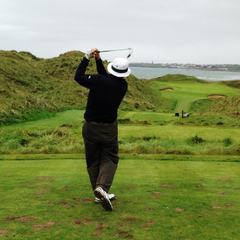IGNORED
What flaws do you think there are in the handicap system?
Note: This thread is 2829 days old. We appreciate that you found this thread instead of starting a new one, but if you plan to post here please make sure it's still relevant. If not, please start a new topic. Thank you!
-
Topics Being Discussed Right Now on The Sand Trap
-
Strategy on Neshanic Valley Ridge #2 1 2 3
By billchao, in Instruction and Playing Tips
- neshanic
- mystrategy
- (and 2 more)
- 36 replies
- 3,278 views
-
- 2,372 replies
- 237,884 views
-
- 23 replies
- 8,314 views
-
- 233 replies
- 22,207 views
-
- 39 replies
- 3,882 views
-








Recommended Posts
Create an account or sign in to comment
You need to be a member in order to leave a comment
Create an account
Sign up for a new account in our community. It's easy!
Register a new accountSign in
Already have an account? Sign in here.
Sign In Now